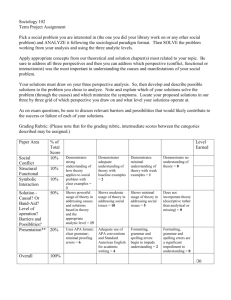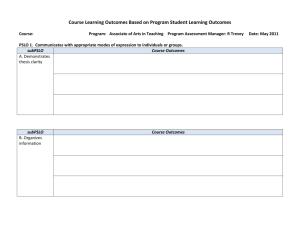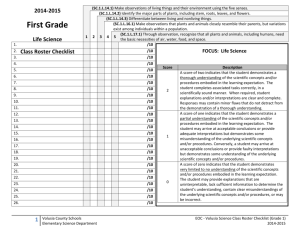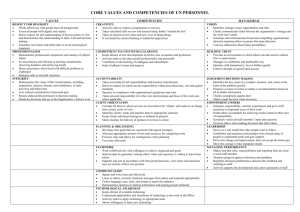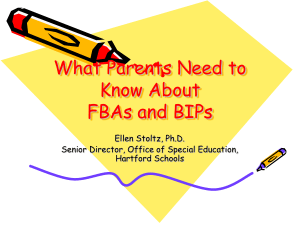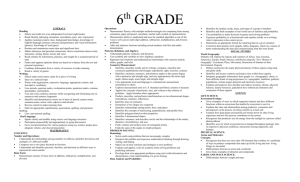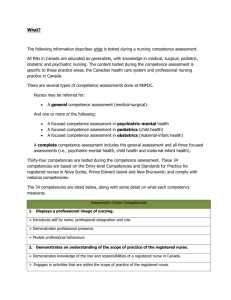marking rubric
advertisement
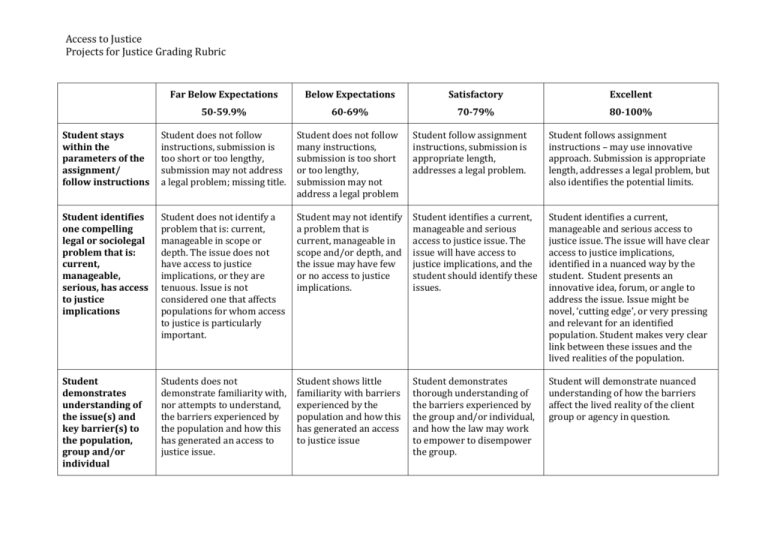
Access to Justice Projects for Justice Grading Rubric Far Below Expectations Below Expectations Satisfactory Excellent 50-59.9% 60-69% 70-79% 80-100% Student stays within the parameters of the assignment/ follow instructions Student does not follow instructions, submission is too short or too lengthy, submission may not address a legal problem; missing title. Student does not follow many instructions, submission is too short or too lengthy, submission may not address a legal problem Student follow assignment instructions, submission is appropriate length, addresses a legal problem. Student follows assignment instructions – may use innovative approach. Submission is appropriate length, addresses a legal problem, but also identifies the potential limits. Student identifies one compelling legal or sociolegal problem that is: current, manageable, serious, has access to justice implications Student does not identify a problem that is: current, manageable in scope or depth. The issue does not have access to justice implications, or they are tenuous. Issue is not considered one that affects populations for whom access to justice is particularly important. Student may not identify a problem that is current, manageable in scope and/or depth, and the issue may have few or no access to justice implications. Student identifies a current, manageable and serious access to justice issue. The issue will have access to justice implications, and the student should identify these issues. Student identifies a current, manageable and serious access to justice issue. The issue will have clear access to justice implications, identified in a nuanced way by the student. Student presents an innovative idea, forum, or angle to address the issue. Issue might be novel, ‘cutting edge’, or very pressing and relevant for an identified population. Student makes very clear link between these issues and the lived realities of the population. Student demonstrates understanding of the issue(s) and key barrier(s) to the population, group and/or individual Students does not demonstrate familiarity with, nor attempts to understand, the barriers experienced by the population and how this has generated an access to justice issue. Student shows little familiarity with barriers experienced by the population and how this has generated an access to justice issue Student demonstrates thorough understanding of the barriers experienced by the group and/or individual, and how the law may work to empower to disempower the group. Student will demonstrate nuanced understanding of how the barriers affect the lived reality of the client group or agency in question. Access to Justice Projects for Justice Grading Rubric Far Below Expectations Below Expectations Satisfactory Excellent 50-59.9% 60-69% 70-79% 80-100% Quality of Proposed Solution Student does not identify solution, or solution is incomplete, surface, or will not address the identified problem. Student identifies a solution, but solution will not thoroughly address the identified problem. Solution may be superficial, and/or may not be supported by evidence-based research. Student identifies one or more feasible, thorough solutions that address all or most of the identified problem. Problems/ challenges with the proposed solution are identified and explained. Solution is supported by evidence-based research (where relevant). Student identifies one or more feasible, thorough, creative solutions that sensitively and realistically responds to the identified problem(s). Solution is supported by evidencebased research (where relevant). Student demonstrates understanding of both legal and non-legal elements of the problem. Student clearly identifies challenges with the proposed approach(es). Quality of research Research may be missing or incomplete, incomprehensible, and/or may not relate to the topic and barriers presented. Attempt is made at thorough research, but research may be incomplete, and/or may not relate to the topic and barriers presented. Research may be dated, limited, or not on point. Research shows clear links between the topic and barriers. Student demonstrates familiarity with historical and current research on the topic. Research demonstrates clear understanding of topic and barriers. Research is thorough, with historical and current sources. Sources are accurately described. Student may have found unique sources, and demonstrates nuanced understanding of the authors’ perspectives. Writing style, grammar, professionalism in appearance and presentation, bibliography and sources Many errors in grammar, spelling. Writing may be unprofessional in content and/or appearance. Bibliography may be incomplete. Sources may be missing or inaccurate. Many errors in grammar, spelling. Writing may be unprofessional in content and/or appearance. Bibliography contains errors. Sources may be missing or inaccurate Some errors in grammar, spelling, etc. Sentences are sophisticated, well edited. May show some weaknesses in writing including but not limited to lack of clarity, verbosity, incorrect use of words, etc. Bibliography complete with few to no No errors, sophisticated writing style including appropriate language, metaphor as appropriate, varied sentences, writing appropriate to audience. Bibliography complete with no errors. All sources are cited properly. Access to Justice Projects for Justice Grading Rubric Far Below Expectations Below Expectations Satisfactory Excellent 50-59.9% 60-69% 70-79% 80-100% errors. All sources are cited properly. Presentation of P4J Disorganized presentation. Problem and proposed solution not clearly identified and significant elaboration and clarification required. Most questions not answered effectively. Group members have unsophisticated and unclear speaking style with many grammatical errors. Appearance is unprofessional and eye contact with audience is minimal. Presentation lacking organization. Discussion of problem identified and proposed solution not clear, and two or more issues may require elaboration and clarification. Many questions not answered effectively. Group members have adequate speaking style with some grammatical errors and heavy reliance on notes. Appearance is professional but little eye contact. Mostly clear organization of presentation. Logical and persuasive progression of problem identified and the proposed solution, although one or two issues may need elaboration or clarification. Most questions answered effectively. Group members all have strong speaking styles with few grammatical errors and some use of notes. Appearance is professional and eye contact maintained throughout. Clear organization of presentation. Logical and persuasive progression of problem identified and the proposed solution. Answers all questions effectively. Group members all have clear, sophisticated speaking styles, and are not reliant on notes. Appearance is professional and eye contact with audience maintained throughout.
